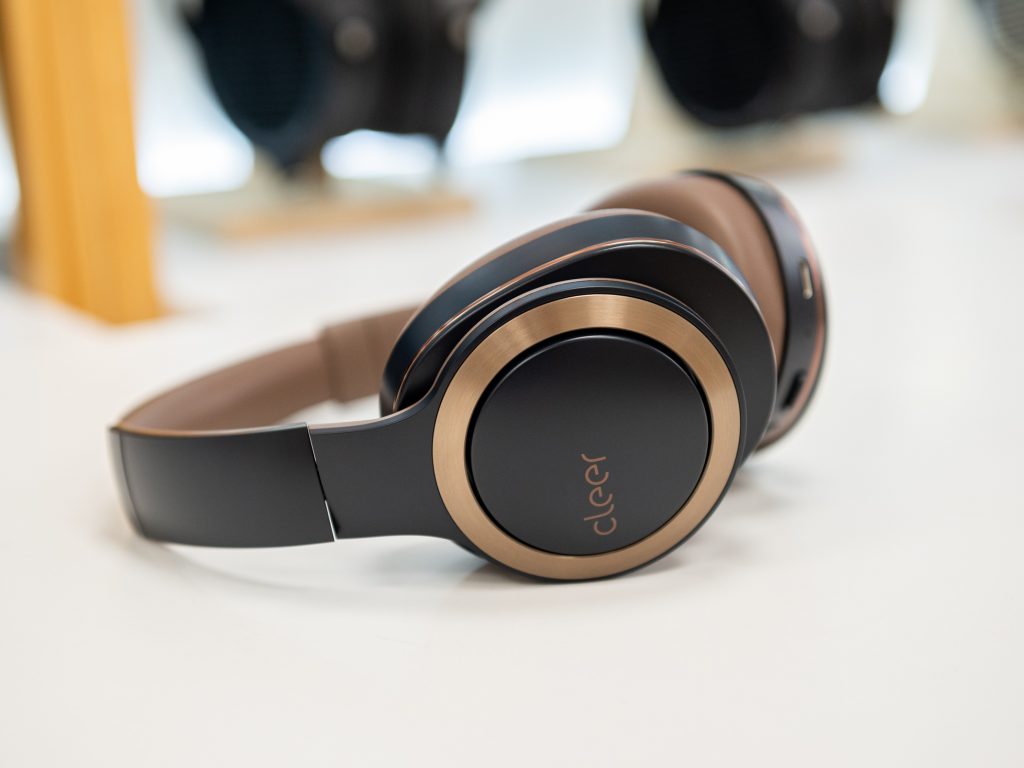The Cleer Enduro ANC are a brilliant portable headphone. They are extremely stylish and comfortable. In addition to a fun and engaging sound, they are a perfect partner for daily use.

[jnews_review_shortcode review_show_pros_cons=”true” review_show_breakdown=”true” review_show_price=”true”]
Compact and Comfortable for listening all day
The Cleer Enduro ANC has enough clamp force to sit tightly on your head without being uncomfortable. they would stay on during moderate exercise which is good too.
Cleer’s Enduro ANC is a compact headphone, and they don’t sacrifice the comfort. Whilst wearing the Enduro ANC, I noticed that the earpads are deep enough that my ears are were pressed against the driver. They are soft enough to be comfortable over long periods of time. I really liked the headband, as it is well padded and the weight distributed evenly.
How good are the features?
The Cleer Enduro ANC is a wireless headphone that is compatible with most Bluetooth devices. Cleer has made an app for them too which allows you to fine tune the ANC and Ambient noise control. There is also an EQ in the app along with a battery percentage indicator. The app is available from Google Play and the App Store so both Android and Apple devices are supported.
Call quality is a standout feature here, whether it’s a zoom call whilst working from home, or a phone call when out and about. The microphone quality is superb. I tested it a few times, and the other person could always hear every word with clarity. Another impressive feature for the price.
Huge battery life!
They have a stated battery life of 60hrs with noise cancelling on. This will vary depending on the volume you listen at, but you can expect excellent battery life from them. They have Active Noise Cancelling which works well in environments where you have a constant background noise (like public transport).
They are also closed back, so the passive isolation is already very impressive. Unlike many ANC headphones, the ANC on these doesn’t seem to affect the sound quality. This is quite surprising and very impressive.
The Enduro ANC also has Ambient Noise Control. This allows you to hear your surroundings without taking the headphones off. This works really well if you need to listen out for announcements on public transport or planes, and don’t want to take the headphones off. It could also come in handy for active use where you want to be semi-aware of what’s around you.
The Cleer Enduro ANC come with an Aux to USB-C cable for when you need to use them with a wired device, which is really handy. Overall Cleer have packed a lot in to these headphones. Do they impress when it comes to the actual sound quality?
How do they sound? (the important bit)
Bass
Plenty of punch and extension. There is a definite lift in the bass compared to a neutral tuned headphone, which is ideal for a portable headphone. These are engaging and fun to listen to. You will never lose track of the beat. Yet at the same time it’s not overly emphasised so as to drown out the mids and highs. I really enjoy how full and punchy the low end is, without being bloated. Not something that’s easy to get right in my opinion.
Midrange
Vocals and guitars still cut through the mix. They are slightly recessed overall, with a mild U shaped sound signature. There is enough detail to keep you focussed on the music, and they don’t have a single hint of harshness or peaks in the midrange that could cause fatigue. They are energetic and smooth at the same time, with fun being the best way to describe their presentation. The Enduro ANC has been tuned for you to enjoy the music.
Treble
These don’t do the typical lower treble boost to introduce a false sense of sparkle and energy. They are smooth in their transition from the upper midrange into the treble region. They instead boost it a little farther up the frequency range, which means there is still a great sense of air. Cymbals have good presence, without any fatigue inducing properties. They might roll off slightly early, but the treble presentation is very well done with without any harshness.
Genres and Soundstaging
The Cleer Enduro ANC handles most genres well. Engaging enough for rock, yet punchy and full enough for modern pop and hip-hop. They sound best with genres that are more up-beat.
Soundstaging is average, which is not a problem. They have a more direct and punchy delivery, you don’t need concert hall width for that.
[jnews_review_shortcode review_show_price=”true”]